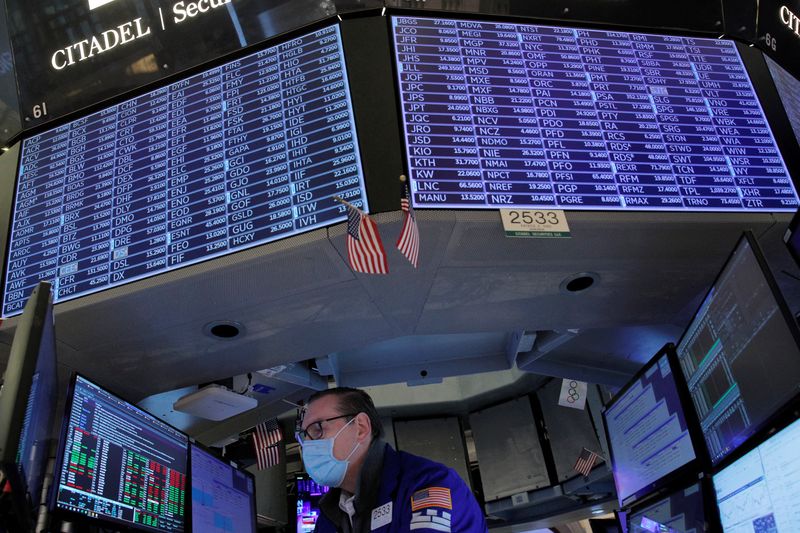By Lewis Krauskopf
NEW YORK – 2022 is off to a turbulent start for U.S. stocks.
Even as the market recouped some losses in the last two sessions of the month, the benchmark S&P 500 ended down 5.3% in January, its biggest monthly drop since the pandemic took hold in March 2020. The tech-heavy Nasdaq is in a correction, while the small-cap Russell 2000 confirmed a bear market, dropping over 20% below its November record high.
GRAPHIC: January to forget in the U.S. stock market, https://graphics.reuters.com/USA-STOCKS/JANUARY/zdvxoarknpx/chart.png Some investors are taking profits after the S&P 500 in 2021 finished its best three-year run in two decades and as the Federal Reserve is set to raise interest rates after equities were supported by the central bank’s post-pandemic easy money policies.
“In a very simple way, I would call it the tightening tantrum,” said James Ragan, director of wealth management research at D.A. Davidson. “Even though they haven’t even started raising rates yet, I think it has led to investors just having some concern about what it means for the market.”
January’s performance could bode poorly for the rest of the year. Since 1950, when the S&P 500 is positive in January, the index has climbed an average of 11.9% for the final 11 months of year, according to LPL Financial. However, when January is negative, the S&P 500 historically rises an average of 2.7% in the last 11 months.
GRAPHIC: How S&P 500 fares rest of year, following January, https://graphics.reuters.com/USA-STOCKS/JANUARY/dwpkrjakgvm/chart.png More recently, a red January has not necessarily meant a dour rest of year. In the past 10 times January was negative for the S&P 500, the index was positive in nine of those times over the next 11 months, with an average gain of 13.1%, according to LPL Financial.
In January, investors in particular fled growth stocks, including tech and other names carrying high valuations that rest on future profit growth. The S&P 500 growth index fell 8.4% in January.
Value stocks, which have long underperformed growth, held up better with the S&P 500 value index down only 1.7%. Energy shares, which are expected to be among the biggest beneficiaries in an inflationary environment, were standouts, with the energy sector gaining nearly 19% for the month, the only S&P 500 sector in positive territory.
GRAPHIC: Less pain for value stocks versus growth, https://graphics.reuters.com/USA-STOCKS/JANUARY/byvrjxrenve/chart.png GRAPHIC: S&P 500 sector performance for January, https://graphics.reuters.com/USA-STOCKS/JANUARY/dwvkrjalxpm/chart.png Amid the sharp declines, investor sentiment about U.S. equities has fallen. Bearish sentiment about the direction of the stock market hit its highest level since 2013 in the latest American Association of Individual Investors Sentiment Survey (AAII).
Sentiment can be a contrary indicator about the market as it could mean that there is a lower threshold for positive surprises.
“Recent depressed investor sentiment readings and the sharp contraction in valuations seen over the past month have tended to be followed by positive market returns on an intermediate basis,” Keith Lerner, co-chief investment officer at Truist Advisory Services, said in a report. GRAPHIC: Bears on the prowl, https://graphics.reuters.com/USA-STOCKS/JANUARY/gdvzynwdbpw/chart.png
(Reporting by Lewis Krauskopf; Editing by Stephen Coates)
